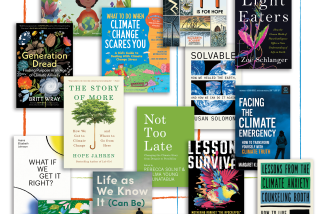Real Lessons for Teenagers on the Brink
- Share via
Cobain, a psychiatric nurse who specializes in suicide awareness and intervention, is a cousin of Nirvana lead singer Kurt Cobain, who fatally shot himself in 1994. The Cobain family has a history of suicide, she says; she too has grappled with depression and the wish to die.
After Kurt’s death, she began to see a need to reach out to young people struggling with similar feelings who might see suicide as a way out for them too. “I don’t want anyone else to feel so bad that it seems death is the only escape,” she writes in a posthumous letter to Kurt.
In this easy-to-read paperback, 10 troubled teens who have coped with divorced parents, weight problems, the stigma of being gay, teen pregnancy and substance abuse offer first-person accounts of how they have fought their way back from the brink. The book is designed to help other young people distinguish between the blues and true depression and recognize suicide warning signs. It encourages them to find adults who can help, or hook up with organizations, support groups or therapists. Cobain includes survival tips, useful phone numbers and Web sites, and provides examples of how to both ask for and offer help.
*
THE RIGHT MOVES; A Girl’s Guide to Getting Fit and Feeling Good by Tiny Schwager and Michele Schuerger. Free Spirit Publishing Inc.; $14.95; 272 pages.
Schwager, a physical therapist and athletic trainer who works with teens, and Schuerger, a former competitive figure skater, team up in this volume to encourage girls to eat right and enjoy fitness, rather than obsess over their bodies and pursue endless diets. Given that more than half of American girls are unhappy with their bodies by the time they reach 13--and that they have a tendency to feast on junk food and avoid vegetables--there is a great need to get through to them with better messages.
In their attempt, the authors begin by addressing self-esteem and offer suggestions for improving mental outlook. They walk readers through good and bad food choices and how to read nutrition labels. They help teens set fitness goals, offer them ways to cope with injuries, and outline the pros, cons and benefits of most major forms of sport and exercise. The book includes several useful contact numbers for organizations that can help both the able-bodied and disabled teen get moving and eating right.
More to Read
Sign up for our Book Club newsletter
Get the latest news, events and more from the Los Angeles Times Book Club, and help us get L.A. reading and talking.
You may occasionally receive promotional content from the Los Angeles Times.








